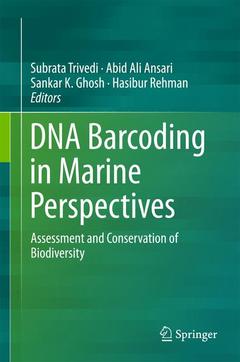DNA Barcoding in Marine Perspectives, 1st ed. 2016 Assessment and Conservation of Biodiversity
Coordonnateurs : Trivedi Subrata, Ansari Abid Ali, Ghosh Sankar K., Rehman Hasibur

More than two third of the surface area of our planet is covered by oceans and assessment of the marine biodiversity is a challenging task. With the increasing global population, there is a tendency to exploit marine recourses for food, energy and other requirements. This puts pressure on the fragile marine environment and needs sustainable conservation efforts. Marine species identification using traditional taxonomical methods are often burdened with taxonomic controversies. Here in this book we will discuss the comparatively new concept of DNA barcoding and its significance in marine perspective. This molecular technique can be helpful in the assessment of crypticspecies which are widespread in marine environment, and can also be used to link the different life cycle stages to the adult which is difficult to accomplish in marine ecosystems. Other advantages of DNA barcoding include authentication and safety assessment of seafood, wildlife forensics, conservation genetics and detection of invasive alien species (IAS). Global DNA barcoding efforts in the marine habitat include MarBOL, CeDAMar, CMarZ, SHARK-BOL, etc. DNA barcoding of different marine groups ranging from the microbes to mammals is to be revealed. In conjugation with newer and faster techniques like high throughput sequencing, DNA barcoding is serving as an effective modern tool in marine biodiversity assessment and conservation.
Hasibur Rehman, Ph.D
Department of Biology
Faculty of Sciences
University of Tabuk
Tabuk, Kingdom of Saudi Arabia (KSA)
Date de parution : 09-2016
Ouvrage de 330 p.
15.5x23.5 cm
Date de parution : 06-2018
Ouvrage de 330 p.
15.5x23.5 cm


